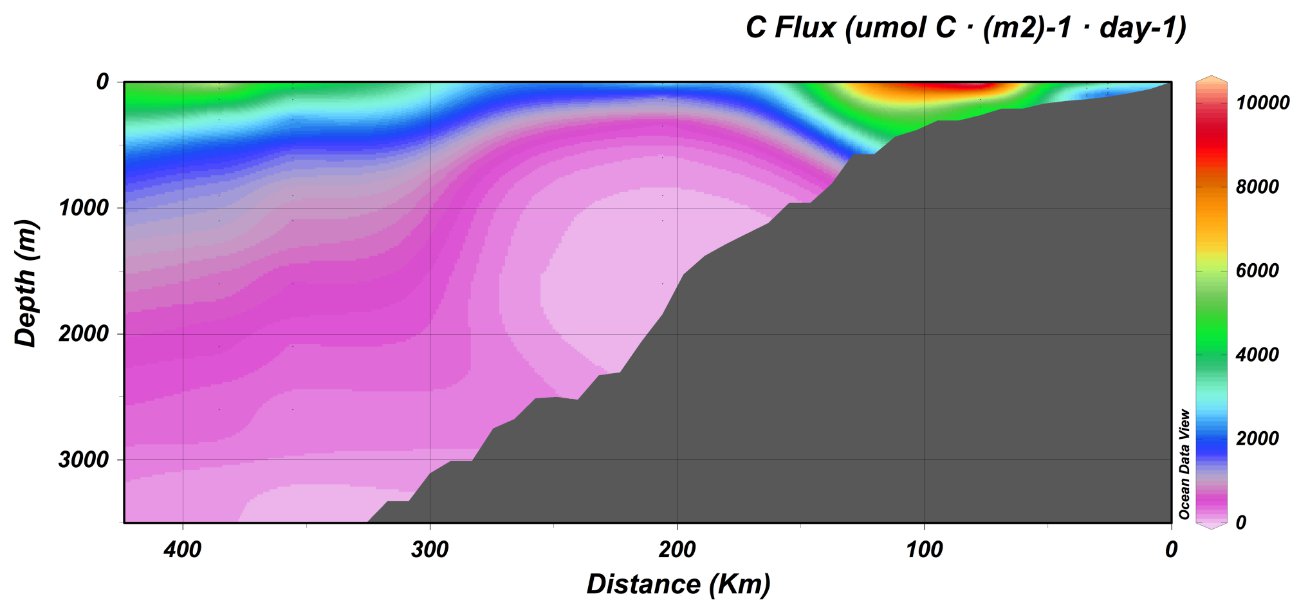Succession of organism communities and related processes forced by near coastal upwelling in the Northern Benguela Current region
 Margalef (1978) proposed a conceptual model of changes in an upwelling ecosystem with increasing distance to the upwelling centre and depth considering the input of auxiliary energy and the fate of it within the upwelling ecosystem (Fig.1). Vinogradov and Shuskina (1978) calculated the spatial transition of dominating autotrophic and heterotrophic processes in the same context.
Margalef (1978) proposed a conceptual model of changes in an upwelling ecosystem with increasing distance to the upwelling centre and depth considering the input of auxiliary energy and the fate of it within the upwelling ecosystem (Fig.1). Vinogradov and Shuskina (1978) calculated the spatial transition of dominating autotrophic and heterotrophic processes in the same context.
In principle, there are two approaches to measure the space-temporal impact of near coastal upwelling on organism communities and related processes, the Lagrangian and the Eulerian approach. Most attempts had been made by drift experiments (Langrangian approach). And mostly, they failed or they were restricted to short term aspects of few days. Different behaviour of a surface marker buoy and the entire water body is the reason for this limitation. In the seventies, successful drift experiment were carried out in the path of an upwelling centre of Cape Timiris / Mauritania over five days (Herbland et al., 1973; Herbland and Vouituriez , 1974; Herbland , 1978) . Currently, Laundry et al. (in press) demonstrated another successful designed experiment in water bodies of different distance from the upwelling centre off southern California. However, both experiments were restricted the lowest trophic levels only for this reason. Measured successive community development from nutrient input to macro-plankton are known from seasonal studies in higher latitudes. In upwelling areas, such investigations are rather rare. Vinogradov et al. (1973) calculated the successive development of a wide spectrum of plankton communities (from bacteria to macro-plankton) up to 100 days in the tropical Pacific using a mathematical model.
In 1979, the successive aging of upwelling water off Namibia was measured (Postel, 1990) using a programme which was originally designed in order to investigate the influence of coastal trapped waves on oceanographic properties (Hagen et al., 1981). The observations were done at the same station every 36 hours (inertial period) by CTD casts and WP2 net sampling from the coast to a seaward distance of 170 km. Results of 15 cycles were averaged per station and showed an increase of sea level difference, SST, and salinity, accompanied by decreasing nutrient contents, and a succession of various maxima, starting with chlorophyll, in turn with oxygen. It was followed by the maximum zooplankton concentration. Carnivorous zooplankton appeared seaward of the maxima of herbivorous taxa. Indices of zooplankton diversity increased while its dominance decreased (Fig.3). From current measurements, Ekman offshore transport and the developmental time of copepod key species, the velocity of the offshore transport component was calculated. This allowed the conversion of spatial scales into temporal scales (10 km equal 2 days).







